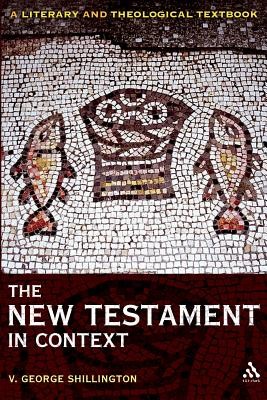
- We will send in 10–14 business days.
- Author: V George Shillington
- Publisher: Bloomsbury Publishing PLC
- ISBN-10: 0567034054
- ISBN-13: 9780567034052
- Format: 15.5 x 23.1 x 2 cm, softcover
- Language: English
- SAVE -10% with code: EXTRA
Reviews
Description
The New Testament in Context is the fruit of a scholarly life teaching the New Testament to undergraduate students.
George Shillington, now Emeritus Professor at Canadian Mennonite University, à has written a textbook on the New Testament which stresses the varying social, rhetorical and theological contexts of these twenty-seven texts. He introduces the book by emphasizing the importance of "context" for reading "texts".à The discussion then moves onto a description of the socio-rhetorical and theological approach, illustrated by exploring a text from one of Paul's letters. The usefulness of a socio-rhetorical reading is often limited by neglecting to recognize the theological aspect of a text. Shillington's textbook addresses thisà tendency byà never losing sight of the theological dimension.à The discussion is then broadened out to explore the larger context of the New Testament world within which the various documents were written.
In addition to leading the students into the texture of the texts, Shillington encourages them to engage in interpretation, e.g. for writing an exegetical essay on a given text.à Terms of reference are defined along the way, andà different schools of thought on given subjects are brought to light.
Each chapter concludes with suggestions for further research on the particular material.
EXTRA 10 % discount with code: EXTRA
The promotion ends in 20d.23:49:28
The discount code is valid when purchasing from 10 €. Discounts do not stack.
- Author: V George Shillington
- Publisher: Bloomsbury Publishing PLC
- ISBN-10: 0567034054
- ISBN-13: 9780567034052
- Format: 15.5 x 23.1 x 2 cm, softcover
- Language: English English
The New Testament in Context is the fruit of a scholarly life teaching the New Testament to undergraduate students.
George Shillington, now Emeritus Professor at Canadian Mennonite University, à has written a textbook on the New Testament which stresses the varying social, rhetorical and theological contexts of these twenty-seven texts. He introduces the book by emphasizing the importance of "context" for reading "texts".à The discussion then moves onto a description of the socio-rhetorical and theological approach, illustrated by exploring a text from one of Paul's letters. The usefulness of a socio-rhetorical reading is often limited by neglecting to recognize the theological aspect of a text. Shillington's textbook addresses thisà tendency byà never losing sight of the theological dimension.à The discussion is then broadened out to explore the larger context of the New Testament world within which the various documents were written.
In addition to leading the students into the texture of the texts, Shillington encourages them to engage in interpretation, e.g. for writing an exegetical essay on a given text.à Terms of reference are defined along the way, andà different schools of thought on given subjects are brought to light.
Each chapter concludes with suggestions for further research on the particular material.


Reviews